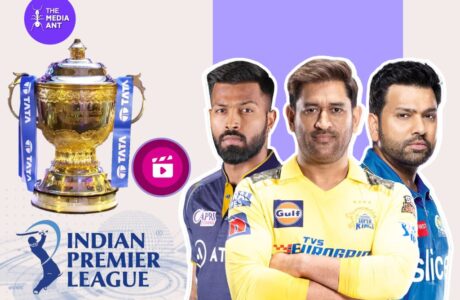Think about your favorite sports memory – the spine-tingling goal, the breathtaking slam dunk, or the heart-pounding finish at the finish line. Now, think about the brands and messages that surrounded those moments.
Sports marketing is a fascinating realm where the passion of the game and the power of marketing collide. It’s the art of turning a simple sporting event into a lifelong memory, and the science of making fans feel like they’re part of something much bigger than themselves.
In this blog, we’re diving headfirst into the thrilling world of sports marketing, uncovering the strategies that have not only left an indelible mark on the sporting landscape but have also captivated our hearts and minds. From awe-inspiring campaigns to unexpected partnerships, we’ll explore the game-changing tactics that have turned athletes into icons and brands into legends. So grab your virtual front-row seat as we dissect some of the best sports marketing strategies and their unforgettable examples – because in this arena, the game is just the beginning.
What is Sports Marketing?
Sports marketing is a subdivision of marketing that focuses on the promotion of sports events and teams as well as the promotion of other products and services through sporting events and sports teams. It is a service in which the element promoted can be a physical product or a brand name.
The goal is to provide the client with strategies to promote sports or to promote some other product, service, business or cause through sports. Sports marketing is also designed to meet the needs and wants of the consumers through exchange processes.
Sports marketing is an element of sports promotion which involves a wide variety of sectors of the sports industry, including broadcasting, advertising, social media, digital platforms, ticket sales, and community relations. Sports marketing is divided into three sectors:
Promotion of sports and sports associations: This includes the promotion of sporting events such as the Olympics, the FIFA World Cup, and the Super Bowl, as well as sports teams such as the New York Yankees and Manchester United. Use of sporting events, teams, and athletes to promote products and services: This includes sponsorship deals, endorsement deals, and in-stadium advertising.
Top Sports Marketing Strategies
Developing successful sports marketing strategies is a reliable method for connecting with customers and establishing brand recognition. Effective advertising not only enhances brand loyalty but also leads to increased sales and greater revenue per fan. However, the question remains: How can we achieve this? How can we devise an exceptional advertising campaign with enduring impact that can span years, if not decades?
No need to worry! Below, we’ve outlined some of the top sports marketing strategies to assist you in crafting optimal campaigns tailored to your brand and audience:
Identify Your Target Audience
Understanding your target audience is paramount because without this knowledge, reaching them effectively becomes a challenge. Every product has its own niche within the market, and these niches come with distinct and diverse demands. Conducting a comprehensive market analysis to segment your target audience can significantly impact your return on investment.
When segmenting your target market, you have the opportunity to categorize your audience based on their behaviors, demographics, and geography. Behavioral segmentation involves examining how your target audience makes decisions when considering products or services similar to what you offer.
In geographical segmentation, the key focus is on the physical location of your target audience. Lastly, in demographic segmentation, you delve into factors such as gender, age, income, and more, all of which play a crucial role in shaping your audience analysis.
Maintain an Active Presence on Social Media
In today’s digital age, a strong and active presence on social media platforms is paramount for sports marketing success. Whether it’s Facebook, Twitter, Instagram, TikTok, or LinkedIn, selecting the right platforms depends on your target audience’s preferences. Consistency is key; regularly posting engaging content, such as updates, highlights, behind-the-scenes glimpses, and user-generated content, keeps your audience engaged. Interacting with fans, responding to comments, and encouraging discussions fosters a sense of community around your brand, enhancing the overall fan experience.
Develop Compelling Content
Compelling content lies at the heart of sports marketing. To capture the attention and loyalty of sports enthusiasts, it’s essential to craft a content strategy that resonates with their interests and emotions. High-quality videos, images, articles, and podcasts related to your brand and the sports you’re involved in are essential.
The power of storytelling should not be underestimated; it allows you to connect with fans on a personal level. Share success stories, athlete profiles, and memorable moments that evoke the passion and excitement of sports, further strengthening your brand’s identity.
Brand and Their Passion for Sports
Authenticity is a vital component of successful sports marketing. Fans can quickly discern whether a brand genuinely shares their passion for sports or is merely attempting to capitalize on the industry’s popularity.
Showcase your brand’s genuine connection to sports through meaningful partnerships with athletes, sports teams, or influencers who align with your brand’s values and mission. Sponsorships and endorsements can help solidify your brand’s association with the sports industry, building trust and credibility among fans.
Strategize Around Major Events
Major sporting events serve as golden opportunities for sports marketers to shine. Plan your marketing campaigns around events such as the Olympics, World Cup, Super Bowl, or local championships that draw massive audiences. These moments offer increased visibility and engagement potential. Create event-specific promotions, contests, and content that captivate and involve fans during these peak periods. Utilize event-related hashtags and trending topics to stay relevant, participate in conversations, and leverage the excitement surrounding these events to benefit your brand.
In addition to these strategies, it’s crucial to establish key performance indicators (KPIs) and regularly measure the effectiveness of your marketing efforts. Monitoring website traffic, social media engagement, conversion rates, and return on investment (ROI) will provide valuable insights into your campaign’s success. By continuously analyzing data, you can refine your strategies and adapt to changing trends in the sports industry and the dynamic digital marketing landscape, ensuring your brand remains at the forefront of the sports marketing game.
By implementing these strategies, you can create impactful sports marketing campaigns that leave a lasting impression, fostering brand loyalty and driving sales for years to come.
Sports Marketing Examples
Nike – Dream Crazier
Nike’s “Dream Crazier” campaign is a compelling marketing initiative that celebrates the strength and achievements of female athletes in various sports disciplines. This campaign has not only inspired future generations but has also effectively addressed and overcome societal and physical barriers faced by women. Nike’s message extends beyond the sports realm; it challenges gender stereotypes and promotes female empowerment.
This highly successful campaign has yielded significant social and brand-related returns. Research indicates that “Dream Crazier” generated an impressive 2.7 million mentions of the Nike brand. Moreover, within less than 24 hours of its launch, it garnered an astounding $43 million worth of media exposure. As a direct result of the campaign’s impact, Nike experienced a remarkable 31 percent surge in online sales within just one week. This campaign stands as a prime example of how a brand can leverage its influence to effect positive change while reaping substantial rewards in terms of brand recognition and sales growth.
Under Armour – Rule Yourself
When we witness a team’s victory or a championship win, we often celebrate the joy it brings to the winning athletes. However, what’s not always apparent are the immense challenges and sacrifices that underpin such accomplishments. Under Armour’s “Rule Yourself” advertising campaign, featuring Olympic gold medalist Michael Phelps, offers a poignant glimpse into the relentless dedication and selfless effort required to achieve greatness in sports.
This campaign, which focuses on the disciplined lives of athletes, effectively communicates the demanding journey towards success. It sheds light on the sacrifices and rigorous work that are often unseen by the public eye. In 2016, the impact of the “Rule Yourself” campaign was evident in Under Armour’s financial performance, with the company reporting record revenues and earnings. Total revenues surged by a remarkable 22%, reaching $4.8 billion, marking a substantial increase from the previous year. The campaign’s success can be attributed to its ability to authentically portray the true essence of what it takes to win, resonating with audiences and contributing to Under Armour’s outstanding growth.
Red Bull – Stratos
One of the most remarkable marketing campaigns in history undoubtedly belongs to Red Bull, and the Red Bull Stratos project stands out as a pinnacle of their marketing strategy. This iconic endeavor garnered a global audience of over 8 million viewers who tuned in to witness the Live Video Stream on YouTube. The project, designed as an innovative high-altitude skydiving mission, not only captured the world’s attention but also secured three World Records in the process.
The central figure in this venture was Austrian skydiver Felix Baumgartner, who took part in the daring Red Bull Stratos mission. This involved ascending to staggering heights using a helium balloon, ultimately reaching approximately 39 kilometers (24 miles) above the Earth’s surface, above New Mexico in the United States. Once at the peak, Baumgartner made a breathtaking descent in a specially designed pressure suit, followed by a parachute-assisted return to Earth.
The entire journey, from stepping out of the capsule to safely touching down, unfolded within roughly ten minutes. Although Baumgartner deployed his parachute at 4 minutes and 19 seconds into the free fall, initial estimates had suggested the free fall could last between 5 to 6 minutes. This awe-inspiring feat exemplified Red Bull’s ability to push the boundaries of human achievement while captivating audiences worldwide.
FAQs Related to Sports Marketing Strategies
What is sport marketing strategy?
Sport marketing strategy refers to the comprehensive plan and set of tactics that sports organizations, teams, and brands use to promote themselves, their events, or products within the sports industry. It involves identifying target audiences, developing promotional campaigns, utilizing various marketing channels, and leveraging partnerships with athletes or teams to achieve specific marketing and business goals.
What are the five strategies and sports marketing?
There are several strategies in sports marketing, but here are five common ones:
Identify Your Target Audience: Understand the demographics and preferences of your audience.
Maintain an Active Presence on Social Media: Engage with fans and promote your brand through social platforms.
Develop Compelling Content: Create engaging content to connect with fans emotionally.
Leverage Sponsorships and Endorsements: Partner with athletes, teams, or events to enhance brand visibility and credibility.
Strategize Around Major Events: Plan marketing efforts around significant sports events to maximize exposure.
What was the first example of sports marketing?
The concept of sports marketing has evolved over time, but one of the earliest examples of sports marketing dates back to the late 19th century when tobacco companies began using baseball cards to promote their products. These cards featured images of baseball players and became collectible items, effectively promoting both the sport of baseball and the tobacco brands.
What are the examples of sports marketing mix?
The sports marketing mix, also known as the 4Ps, includes various elements:
Product: In sports marketing, the “product” can refer to sports events, merchandise, tickets, or even the athletes themselves.
Price: Setting ticket prices, merchandise costs, or sponsorship fees.
Place: Determining where sports events will be held and how products will be distributed.
Promotion: Marketing and promotional activities to create awareness, engage fans, and drive sales. This includes advertising, social media, and partnerships.
How is marketing used in sports?
Marketing is used in sports to promote teams, athletes, events, merchandise, and more. It involves various strategies like advertising, sponsorships, social media, content creation, and event promotion to engage fans, attract sponsors, and generate revenue. Marketing helps build a fan base, create brand recognition, and maximize the commercial potential of sports-related products and experiences.





